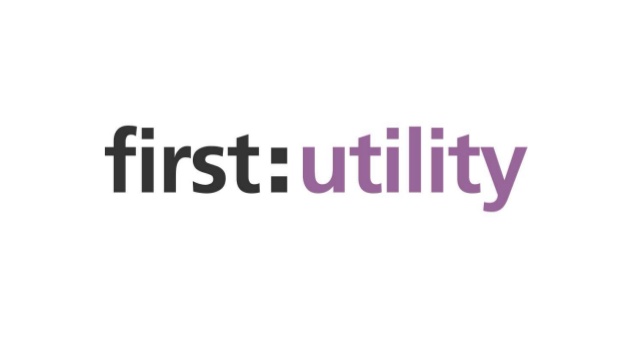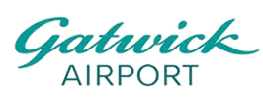Ansible AWX vs. Puppet, Chef, SaltStack, and Commercial Automation Platforms: What’s the Best Choice for Enterprise Automation?
Here at Sirius Open Source, we often get asked, "How does Ansible AWX compare to tools like Puppet, Chef, and SaltStack?" This is a very good question, and one that deserves a clear, honest answer. We understand the need to choose the right foundational technology, as it is a strategic decision a business will have to live with for years.
We want to be upfront: AWX is an incredibly accessible and powerful platform, and for rapid adoption and ad-hoc automation, it is often a clear winner ,. However, the automation landscape is not a simple hierarchy; it is a diverse collection of specialized tools, each with distinct architectural philosophies and ideal use cases,. In fact, for complex environments or those needing strict compliance, AWX's agentless architecture may make it a less effective choice than an agent-based competitor,. This article will provide a fiercely transparent comparison of Ansible AWX versus its primary configuration management alternatives and modern orchestration tools, helping you understand each platform's architectural trade-offs and ultimately decide what is best for your specific needs,.
1. The Defining Duality: Architectural Philosophies
The diverse strengths and weaknesses of modern automation tools stem from fundamental architectural and philosophical differences. Understanding these principles is essential for evaluating AWX against its competition.
A. Imperative vs. Declarative Approaches
Imperative (Procedural): This approach focuses on how to achieve a desired state through a step-by-step sequence of actions. Ansible is the quintessential example; its playbooks are essentially a sequential list of tasks. This is intuitive for system administrators accustomed to writing scripts.
Declarative (Model-Driven): This approach focuses on what the final system state should be. The tool (like Puppet or Chef) is responsible for determining the necessary actions to achieve and maintain that desired state. This allows tools like Puppet to act as a "guardian of desired state," continuously monitoring and enforcing configuration,.
B. Agentless vs. Agent-based Models
The mode of communication dictates a tool’s suitability for continuous configuration enforcement.
Agentless (Push) Model: Requires no additional software on managed nodes, typically using standard protocols like SSH. Ansible's agentless design simplifies initial setup and reduces maintenance overhead. This model aligns naturally with the Imperative philosophy and is most effective for ad-hoc, one-time tasks because it requires a manual trigger.
Agent-based (Pull) Model: Requires a lightweight agent (client or "minion") on every managed machine. The agent periodically "pulls" configuration instructions from a central master server. This provides robust, real-time monitoring and continuous enforcement, making it highly effective for preventing and remediating "configuration drift". Puppet, Chef, and SaltStack utilize this model. This model is inherently better suited for a Declarative approach.
2. Ansible AWX: The Community-Driven Controller
Ansible AWX is the Open Source upstream project providing a centralized web UI and control plane for Ansible,.
AWX’s primary strengths are built directly on the Ansible platform’s architectural choices:
- Agentless Simplicity: The agentless model dramatically simplifies initial setup and deployment compared to agent-based competitors.
- Ease of Use: Ansible’s use of human-readable YAML for playbooks is intuitive and accessible, requiring less programming expertise than tools relying on proprietary DSLs,. This accessibility is cited as its greatest marketing asset.
- Massive Ecosystem: The Ansible ecosystem benefits from a large community-contributed library of modules and roles available on Ansible Galaxy.
- Centralized Management: AWX provides crucial features like centralized playbook management, secure credentials, RBAC (Role-Based Access Control), and job scheduling necessary for team collaboration.
Key Limitation: AWX lacks the enterprise-grade stability, security, compliance guarantees, and professional support (SLAs) that are included with its commercial counterpart, Red Hat Ansible Automation Platform (AAP). Of course these can be provided through commercial providers, making the fully Open Source AWX platform equivalent to Red Hat’s quasi-proprietary product.
3. Head-to-Head Comparison: Specialized Configuration Management
While AWX excels at rapid deployment, enterprises with specific needs must consider the trade-offs offered by agent-based competitors.
| Aspect | Ansible AWX | Puppet | Chef | SaltStack |
|---|---|---|---|---|
| Architectural Model | Agentless (Push) | Agent-based (Pull) | Agent-based (Pull) | Agent-based (Push/Pull) |
| Automation Philosophy | Imperative (Procedural) | Declarative (Model-Driven) | Declarative (Code-Driven) | Event-Driven / Imperative |
| Configuration Language | YAML | Puppet DSL (Ruby-based) | Ruby DSL | YAML/Python |
| Learning Curve | Low | High, | High, | Moderate-High |
| Ideal Use Cases | Small/Mid-sized teams, rapid deployments | Large enterprises, compliance, configuration drift, | Developer-centric teams, complex infrastructures | High-speed remote execution, event-driven ops, |
| Corporate Backing | Red Hat (IBM) | Perforce | Progress Software | Broadcom (VMware) |
A. Puppet: The Guardian of Desired State
Puppet is defined by its ability to ensure unmatched consistency. The agent automatically remediates any detected deviation from the desired state, making it highly effective for compliance and security in large enterprises and regulated industries,. Its primary drawback is the steep learning curve associated with its proprietary, Ruby-based DSL,.
B. Chef: The Developer’s Automation Toolkit
Chef offers a high degree of flexibility for intricate automation workflows due to its use of a Ruby-based DSL,. This allows developers to treat infrastructure as code (IaC) and integrate traditional software development practices. Chef is ideal for teams with existing Ruby expertise and those managing highly complex, dynamic environments. Like Puppet, its complexity and reliance on "programmer expertise" present a high learning curve,.
C. SaltStack: High-Velocity Execution
SaltStack stands out for its high-speed remote execution and event-driven automation. It uses a high-speed ZeroMQ messaging library and persistent TCP connections to enable "near-instant" and parallel execution on thousands of nodes simultaneously,. This makes it the tool of choice for real-time orchestration at scale. However, its corporate direction is a strategic risk due to its acquisition by Broadcom (VMware), which has been perceived by some as leading to a decrease in community size and uncertainty about long-term corporate support,.
4. Complementary Tools: Orchestrating the Orchestrators
It is important to note that many modern solutions leverage Ansible for configuration management but rely on other tools for overall governance and workflow management,. These platforms are not direct competitors to AWX but rather complementary layers.
Rundeck: This platform is an Open Source automation server that provides a centralized web UI for executing scripts and commands. It excels as a "centralized job scheduler" and "self-service portal," allowing organizations to define standardized operational procedures and delegate them securely. Rundeck can easily orchestrate Ansible playbooks alongside other tools.
Spacelift: Representing a higher level of automation, Spacelift acts as a centralized control plane for managing multiple IaC and configuration management tools, including Terraform, Ansible, and Kubernetes. Its core value proposition is governance and security through policy-as-code and automated drift detection across multi-tool, multi-cloud environments,.
5. Strategic Guidance: Choosing the Right Platform
The optimal choice depends entirely on the organization's needs, scale, and existing skill set.
A. Recommendations by Organizational Profile
Small to Mid-Sized Teams (SMEs) and Proofs of Concept (POCs): Ansible AWX is the clear winner. Its low barrier to entry, agentless architecture, and powerful web UI provide a fast, cost-effective path to centralized automation,.
Large Enterprises with High Compliance Needs: These organizations must carefully weigh the continuous enforcement capabilities of Puppet against the code-driven flexibility of Chef. The decision often hinges on the existing talent pool—whether the team is more sysadmin-centric (favoring Puppet) or developer-centric (favoring Chef).
DevOps-Mature Organizations: Teams that already use multiple automation tools should look to orchestration layers like Rundeck and Spacelift,. These tools are seen as the next logical step, functioning as a layer to "orchestrate the orchestrators".
B. The Importance of Corporate Stability
A tool's long-term viability is tied to its corporate backing and community health. Red Hat’s strong corporate sponsorship alone, not to mention other Open Source corporate players, of Ansible provides a stable, long-term outlook and robust, security-hardened commercial product (AAP). Conversely, recent changes in ownership for platforms like SaltStack and shifts in the EULA for Open Source Puppet create potential friction and raise concerns about future product direction and skill gaps,,.
The strategic imperative for most medium-to-large enterprises is not to choose between Open Source and Proprietary, but to combine a robust, professionally supported platform (like AAP) with a strategic services partner to accelerate time-to-value and mitigate risk.
















































